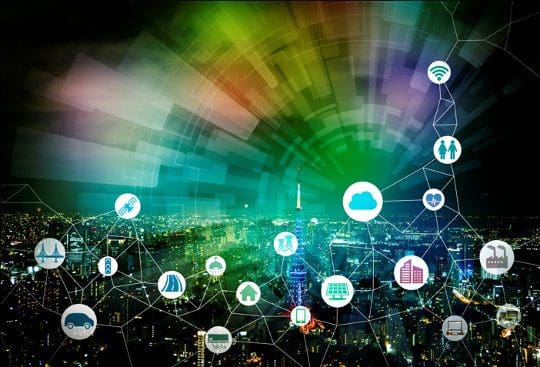The dynamics between AI and IoT
We see the need for a new type of Engineer who will combine knowledge from Electronics & IoT with Machine learning, AI, Robotics, Cloud and Data management (devops).
How does Artificial Intelligence (AI) apply to Internet of Things(IoT)?
AI / Machine Learning for Data Science isfar more than applying predictive algorithms to an IoT dataset. Indeed, as we shall see below: I believe that we are seeing the need for a new type of Engineer who will combine learnings from Electronics(IoT) with Machine learning, AI, Robotics, Cloud and Data management (devops)
Background
AI is based on Deep Learning algorithms. Deep Learning involves automatic feature detection from data. AI techniques can be applied to a range of Data types including: Images and sound (CNNs), Transactional data, Sequences (LSTMs), Text (Natural Language Processing) and Behaviour (Reinforcement learning). With this background,let us see how these ideas apply to IoT
Impact of AI on IoT
I have written previously about the Ten ways Data Science for IoT is different from traditional Data Science
AI techniques extend machine learning strategies in four ways:
- Complex decisions based on detecting a large number of hidden or hierarchical influencers
- Self learning
- Self-healing
- Autonomous decision making
By considering more complex decisions (many more influencers), AI techniques extend traditional Machine learning strategies(like Anomaly detection). We have to now address questions such as:
- What decisions are suited for AI?
- Where can they be made?
- How can the decisions be made? (mechanism)
- How can they be propagated?
- What is the Impact?
This involves implementation of models like the Digital Twin and Continuous learning. The domains most likely to be impacted by the deployment of AI with IoT include: Automotive – Self driving cars; Smart cities and Cloud robotics
Some additional notes
- Data Science for IoT starts involves working with Time series data (using models like ARIMA) and then we consider a range of technologies relevant to IoT including LSTMs
- Differences between traditional datasets and IoT Datasets include processing of noise, skew etc
- Because voice interfaces like Alexa have a role in interacting with sensors including Automotive applications, Natural language processing will play a part with IoT
- The combination of AI and IoT could play a role in Cyber security
- feature engineering for IoT is complex and could involve working with the Device. This could be helped by AI in case of complex devices which comprise a large number of sensors(ex locomotives)
- Frequency domain analysis (pdf) like fast Fourier transforms have a role to play
Conclusion
We are seeing the need for a new type of Engineer who will combine learnings from Electronics(IoT) with Machine learning, AI, Robotics, Cloud and Data management (devops). This blog is based on my teaching. I teach a course on Implementing Enterprise AI and also teach Data Science for IoT at the University of Oxford.
Related:

